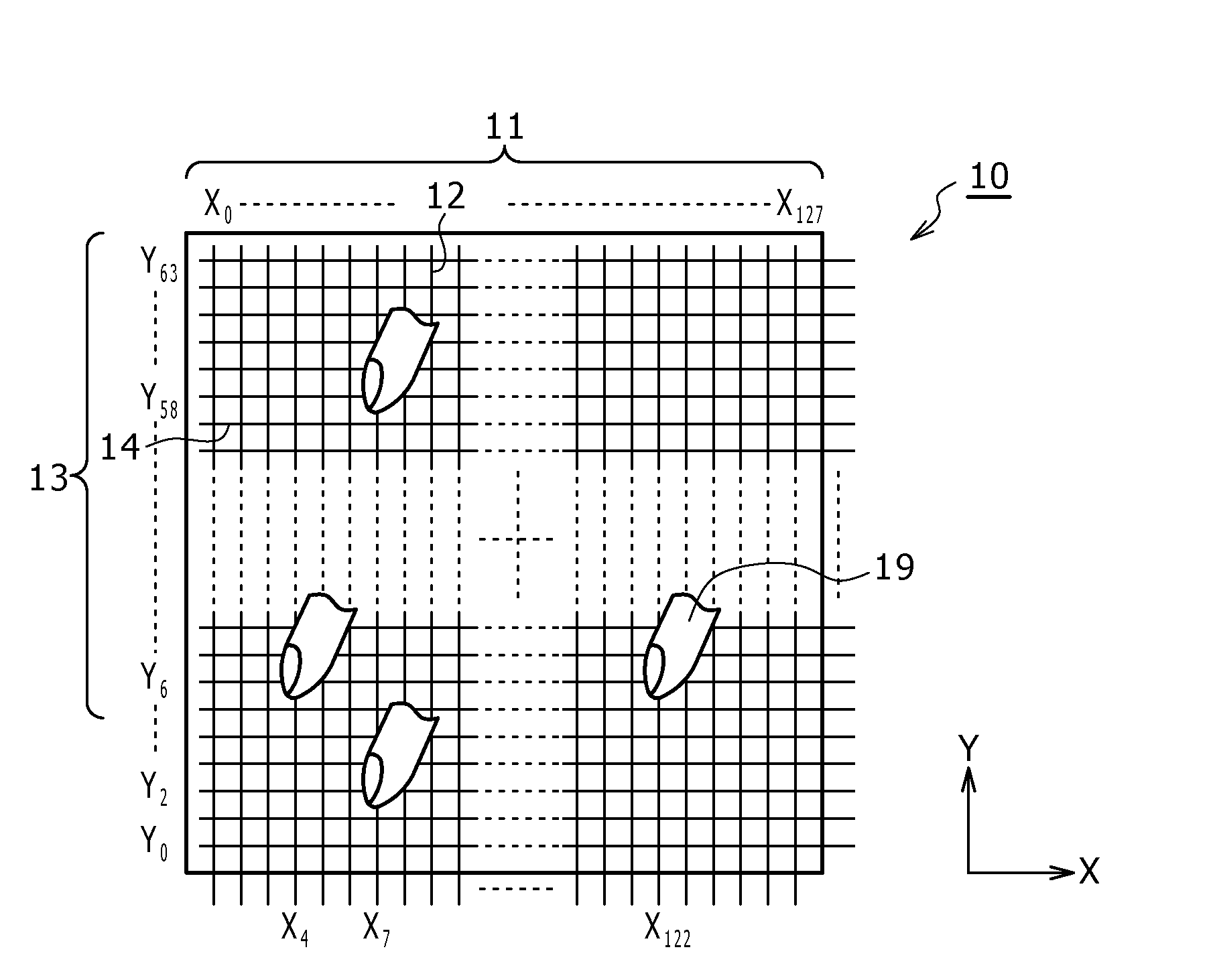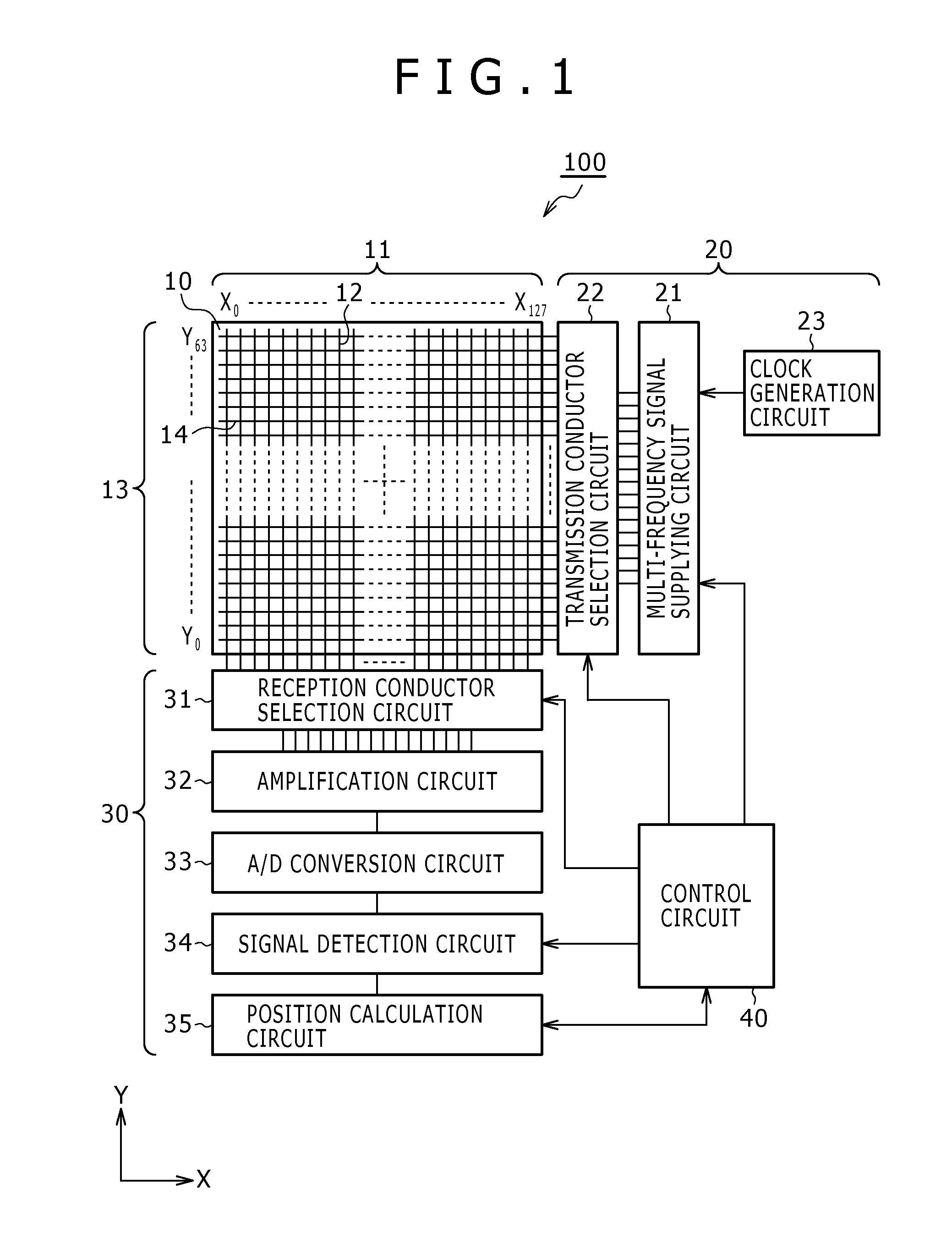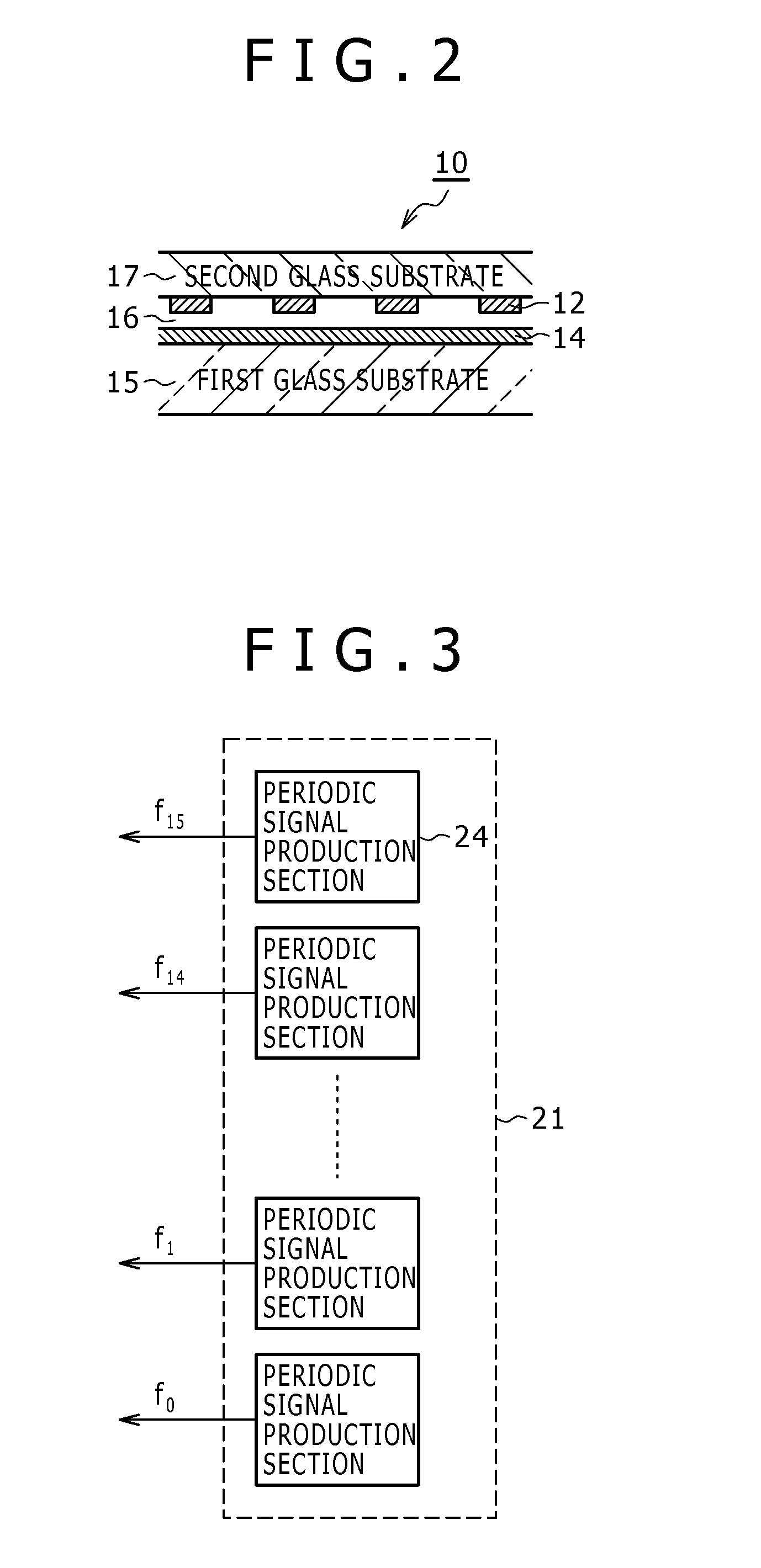Pointer detection apparatus and pointer detection method
a detection apparatus and pointer technology, applied in the field of pointer detection apparatus and pointer detection method, can solve the problems of inconvenient practical use of the pointer detection apparatus described above, long time-consuming and laborious detection at all cross points, etc., and achieve the effect of speeding up
- Summary
- Abstract
- Description
- Claims
- Application Information
AI Technical Summary
Benefits of technology
Problems solved by technology
Method used
Image
Examples
first embodiment
1. First Embodiment
[0086]A first embodiment of the present invention relates to a basic configuration of a pointer detection apparatus and a pointer detection method of the present invention.
[0087]In the present embodiment, each of a transmission conductor group and a reception conductor group of a sensor section is divided into a plurality of groups, and signals in the form of periodic signals having frequencies different from each other among the different groups are supplied simultaneously, that is, multiplex transmitted. In the following description, the supplying form of signals in the present embodiment is referred to as “frequency multiplex system” or “frequency multiplex type,” and a plurality of periodic signals supplied are generally referred to as “multi-frequency signal.” The position detection system in the present invention is an electrostatic coupling system wherein the position of a pointer is detected based on a variation of the electrostatic coupling state between ...
second embodiment
2. Second Embodiment
Configuration of the Pointer Detection Apparatus
[0361]As described hereinabove in connection with the first embodiment and modifications 6 to 12 and 15 to 17 to the first embodiment, in the pointer detection apparatus of the present invention, periodic signals of different frequencies from each other can be supplied to a plurality of transmission conductors 14, and output signals from a plurality of reception conductors 12 can be input collectively to one amplifier. Further, a single pointer detection apparatus may selectively incorporate and switch between one or more configurations described above in connection with modifications 6 to 12 and 15 to 17, depending on each application, a required sensitivity, or the like. In particular, a single pointer detection apparatus may be configured to selectively vary the supplying form of periodic signals to the transmission conductor group 13 and the detection form of output signals from the reception conductor group 11 ...
third embodiment
3. Third Embodiment
[0396]In a third embodiment, another example of rotation of switching operation of transmission conductors 14 is used. The pointer detection apparatus of the third embodiment has the same configuration as that of the first embodiment, and therefore, overlapping description of the configuration is omitted herein to avoid redundancy.
[0397]The third embodiment is different from the first embodiment in that, while the rotation in the first embodiment is carried out such that each of the frequencies f0 to f15 supplied from the multi-frequency signal supplying circuit 21 is supplied to a fixed one of the transmission blocks 25, as seen in FIG. 5, the rotation in the third embodiment is carried out such that periodic signals to be supplied to transmission blocks may vary (i.e., each of the frequencies may be supplied to different transmission blocks). FIGS. 52A and 52B illustrate examples of the rotation of the switching operation of transmission conductors according to ...
PUM
 Login to View More
Login to View More Abstract
Description
Claims
Application Information
 Login to View More
Login to View More - R&D
- Intellectual Property
- Life Sciences
- Materials
- Tech Scout
- Unparalleled Data Quality
- Higher Quality Content
- 60% Fewer Hallucinations
Browse by: Latest US Patents, China's latest patents, Technical Efficacy Thesaurus, Application Domain, Technology Topic, Popular Technical Reports.
© 2025 PatSnap. All rights reserved.Legal|Privacy policy|Modern Slavery Act Transparency Statement|Sitemap|About US| Contact US: help@patsnap.com



